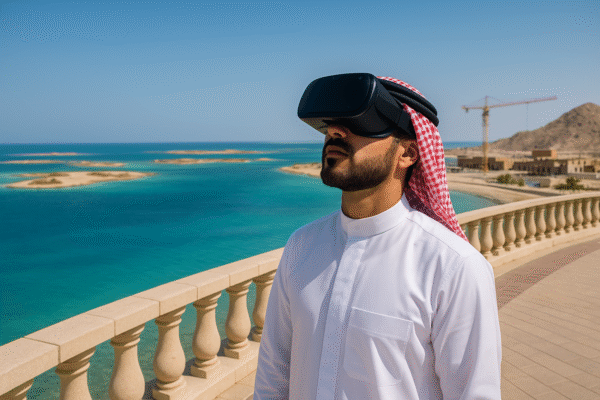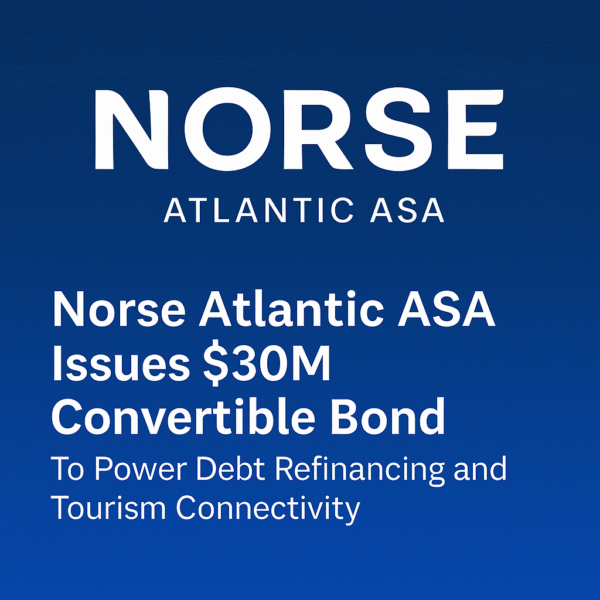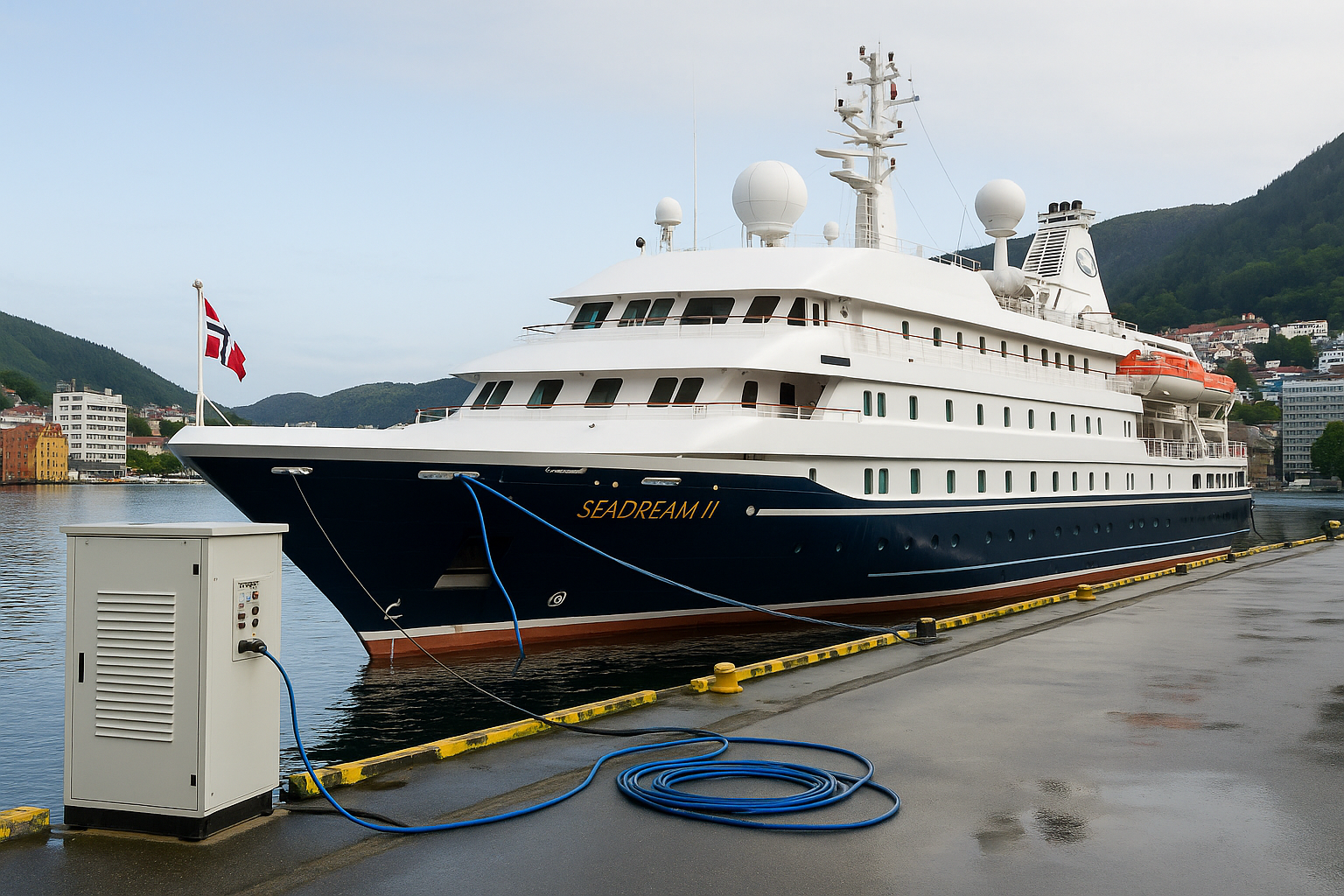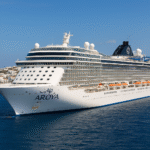SeaDream II Achieves Zero-Emission Milestone in Bergen with Shore Power Integration
In a landmark step toward sustainable maritime tourism, the ultra-luxury cruise yacht SeaDream II has become the first in its class to successfully connect to shore power at the Port of Bergen, Norway. The 14-hour zero-emission port stay earlier this year not only demonstrates the feasibility of eco-conscious cruise operations but also signals a new era of environmentally responsible luxury travel.
By shutting down its main engines and drawing power directly from Bergen’s local electricity grid, SeaDream II minimized its environmental footprint and prevented the emission of harmful pollutants typically released during port stays. This forward-thinking achievement represents a critical step in SeaDream Yacht Club’s long-standing sustainability commitment.
“This is an important milestone for us and another step towards greener travel,” said Andreas Brynestad of SeaDream Yacht Club. “Visiting among the world’s most beautiful destinations comes with the feeling of responsibility.”
Shore Power Integration: A First for Luxury Yachts in Norway
SeaDream II’s successful shore power connection is the result of an extensive 2023 retrofit, equipping the vessel with the necessary infrastructure to utilize shore power at equipped ports. This capability allows the vessel to operate entirely on land-supplied electricity while docked—eliminating emissions and reducing noise pollution in port cities like Bergen.
The move aligns with Norway’s aggressive sustainability goals, as the country aims to reduce emissions from cruise and ferry traffic by requiring zero-emission operations in World Heritage fjords by 2026. Bergen, as a leading cruise destination, has been investing in shore power infrastructure as part of its “Green Port” initiative supported by Enova SF, a Norwegian government agency promoting clean energy projects.
SeaDream’s sister ship, SeaDream I, completed a similar upgrade during its 2024 drydock at Naval Rocha Shipyard in Lisbon, ensuring the entire fleet is now capable of shore power connection.
Leading the Way in Eco-Luxury Cruising
SeaDream Yacht Club has consistently prioritized sustainability without compromising on the opulent guest experience. Beyond shore power, the company has already banned heavy fuel oil (HFO)—a pollutant-heavy marine fuel still used by many large cruise ships. Instead, SeaDream yachts operate on low-sulfur fuels that are significantly cleaner and safer for marine ecosystems.
The brand’s sustainability focus also extends to its culinary and waste management practices. Guests can choose from a full plant-based gourmet menu, which not only supports global climate goals but also reduces onboard food waste and resource consumption. Local ingredient sourcing further minimizes carbon emissions associated with food transportation, and contributes directly to supporting regional economies.
Onboard, the company has eliminated most single-use plastics, introduced reusable amenities, and implemented efficient waste sorting and reduction measures. These changes reflect a genuine ethos of environmental stewardship, rooted in SeaDream’s desire to preserve the destinations it visits.
Why Shore Power Matters for Cruise Tourism
Shore power—also known as cold ironing or Alternative Maritime Power (AMP)—is fast becoming a cornerstone of sustainable port operations across Europe and North America. When docked, ships typically run diesel-powered auxiliary engines to generate electricity. This process emits nitrogen oxides (NOx), sulfur oxides (SOx), and carbon dioxide (CO₂), contributing to air pollution and climate change.
By switching to grid electricity, ships like SeaDream II can cut port-side emissions by over 95%, depending on the energy source. Norway’s grid, powered by 98% renewable energy (mainly hydroelectric), provides a uniquely clean option for moored vessels.
According to the Norwegian Maritime Authority, shore power use at Norwegian ports is projected to eliminate up to 300,000 tonnes of CO₂ annually if widely adopted—a vital contribution to the country’s national climate objectives.
Setting a New Standard for the Cruise Industry
SeaDream Yacht Club’s operational upgrades set a benchmark for the wider cruise industry, which has long faced criticism for its environmental impact. As passengers become more eco-conscious, demand is growing for cruise operators to offer luxury experiences that also align with sustainability values.
The company’s strategy is proactive and anticipatory—addressing not just current environmental regulations, but also positioning itself to comply with upcoming international maritime emissions standards, including those from the International Maritime Organization (IMO).
“By incorporating shore power into our operations, we can continue to offer incredible luxury experiences while also protecting the destinations we visit,” Brynestad emphasized.
What’s Next: SeaDream’s Sustainability Vision
SeaDream’s future plans include continued investment in energy-efficient onboard systems, further waste management improvements, and eco-conscious shore excursions. Enhancing the sustainability of every aspect of the guest experience is a key goal—from using renewable materials in cabins to adopting smarter voyage planning systems that minimize fuel use.
In line with the European Green Deal and global trends toward decarbonization in tourism, SeaDream aims to stay ahead of the curve by continuously refining its green cruising practices.
Conclusion: A New Chapter in Eco-Luxury Travel
SeaDream II’s shore power breakthrough in Bergen is more than a technical upgrade—it’s a bold statement of intent. By leading the charge in zero-emission luxury cruising, SeaDream Yacht Club is showing that luxury and sustainability can indeed sail together. The company not only enhances the cruise experience for its discerning guests but also helps preserve the marine and cultural treasures that make its itineraries unforgettable.
As climate-conscious tourism becomes the global standard, SeaDream is setting the course—and inviting the rest of the industry to follow.
For more travel news like this, keep reading Global Travel Wire https://www.globaltravelwire.com/















